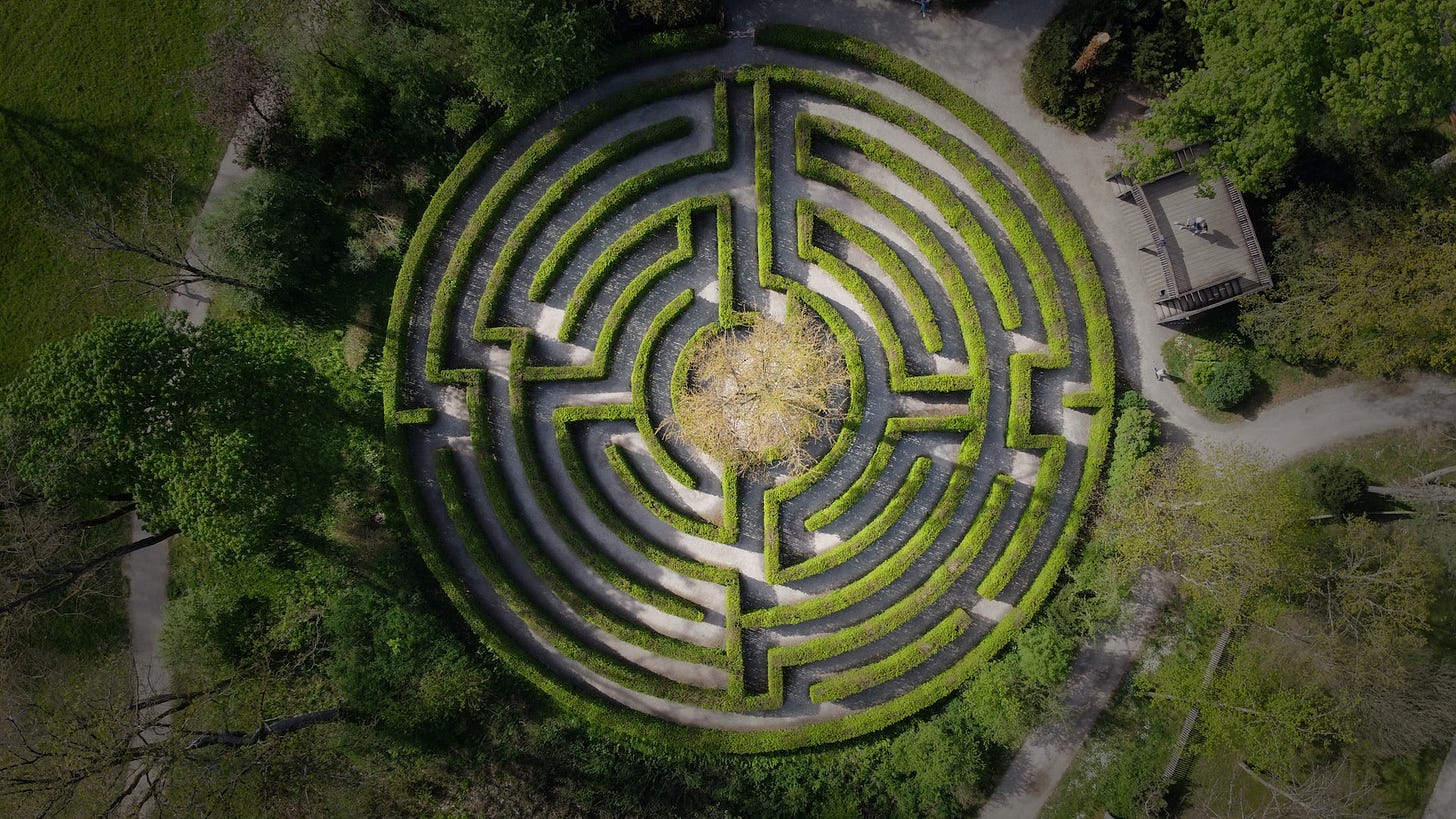A Whackadoodle Riddle Game; plus a few words about...oops I shouldn't tell you, or I'd be giving you the answer to one of the riddles.
I've always been a fan of 'the riddle game', a contest of knowledge and reasoning in which each person takes turns asking a question. The first one who can't come up with the right answer loses.

Here’s a riddle I once gave my afterschool kids. The kids who guessed the riddle got five extra point towards store.
“How is it that a man can be born in the year 1999, yet pass away in the year 1949?” (see the answer under the arrow in this post)
Yes, I do love riddles. Besides being a fun way to challenge your friends and family, the ‘riddle game’ is a popular literary devise.
One of the more recent literary examples of the riddle games occurs during the Triwizard Tournament in Harry Potter and the Goblet of Fire, when Harry had to answer the riddle of the Merfolk. One of the oldest is Sophocles' Riddle of the Sphinx in Oedipus the King. You'll also find riddles in Rumpelstiltskin, Die Hard with a Vengeance, and numerous crime dramas. In Star Trek, the audience is often asked to solve riddles about a new species.
In The Hobbit, Bilbo and Gollum test their wits. If Bilbo wins their riddle game, then Gollum has to show him the way out of a tunnel; if Bilbo loses, he becomes Gollum's dinner.
Here are the six Bilbo and Gollum Riddles. Can you figure them out?
Riddle 1:
What has roots as nobody sees,
Is taller than trees,
Up, up it goes,
And yet never grows?
Riddle 2:
Voiceless it cries,
Wingless flutters,
Toothless bites,
Mouthless mutters.
Riddle 3:
It cannot be seen, cannot be felt,
Cannot be heard, cannot be smelt.
It lies behind stars and under hills,
And empty holes it fills.
It comes out first and follows after,
Ends life, kills laughter.
Riddle 4:
Alive without breath,
As cold as death;
Never thirsty, ever drinking,
All in mail never clinking.
Riddle 5:
This thing all things devours;
Birds, beasts, trees, flowers;
Gnaws iron, bites steel;
Grinds hard stones to meal;
Slays king, ruins town,
And beats mountain down.
Riddle 6: What have I got in my pocket?
(See answers below the arrow)
But first:
One more Riddle
I came across this riddle a while ago. It's pretty popular with the motivational speaking crowd. I wonder if you've heard it.
Who am I?
I am your constant companion.
I am your greatest helper and your heaviest burden.
I will push you onward, or drag you down to failure.
I am completely at your command.
Half the things you do, you might just as well turn over to me,
and I will be able to do them quickly and correctly.
I am easily managed;
you must merely be firm with me.
Show me exactly how you want something done,
and after a few lessons, I will do it automatically.
I am the servant of all great men.
And, alas, of all failures as well.
Those who are great, I have made great.
Those who are failures, I have made failures.
I am not a machine, though I work with all the precision of a machine.
Plus, the intelligence of a man.
You may run me for profit, or run me for ruin.
Your choice makes no difference to me.
Take me, train me, be firm with me,
and I will put the world at your feet.
Be easy with me and I will destroy you.
Who am I? See answers below the arrow. (Don’t cheat unless you have to):

Answer to the “How is it that a man can be born in the year 1999, yet pass away in the year 1949?” riddle:
He was born in 1999 BC (aka 1999 BCE, Before Common Era). This riddle was always a good introduction for a lesson about how timelines work.
Answers to the Bilbo and Gollum riddles:
(1) mountain, (2) wind, (3) dark, (4) fish, (5) time, (6) the one ring
The Answer to the ‘Who am I?’ riddle:
I am your habits.
A few more words regarding habits…
I think that one of the reasons that we all got so discombobulated during the 2020 Pandemic is because all of our habits went helter-skelter. The things we did everyday without thinking, we could no longer depend on. We had to rethink everything, even our daily routines.
The following is an excerpt from my first book in which I explain how to retrain a habit. I wrote it in 2005. So much has happened since then. Please note that in my book, I gave ‘habits’ the name ‘Workhorse’ because they do so much of our work. Let me know if you think it holds up after all these years…
How can you retrain your workhorse? First, don’t try to change every bad habit at once. You’ll only overwhelm yourself.
Begin by picking your top three bad habits. Ask yourself to pick three things that you’re doing on a regular basis, that if you stopped doing, would most improve the quality of your life. Or conversely, ask yourself to identify three things that you’re not doing, that if you began to do, would most improve the quality of your life.
Your answers to these two questions become the first few habits that you tackle. (Be sure that is is no more than three)
Next, realize that merely removing a bad habit is incredibly hard, but replacing a bad habit with a good habit is surprisingly easy. I mean, if you simply tell your workhorse to not do something, your workhorse balks. It needs to do something, and being told to do nothing creates a void. But if you give your workhorse an alternative action each time a habit wants to take over, then it’s just a matter of time before that new action becomes the new habit.
So, in order to remove a bad habit, you need to imagine some good habit that you’d like to replace it with. And once you have both the good habit and the bad habit in mind, switching them is just a matter of repetition. (Sort of like when yogi’s give people mantras.)
Affirmations are one of the best tools for retraining your workhorse. Suppose, for example, that you have “a habitual negative thought pattern” that you want to retrain. Let’s say that you have the habit of calling yourself lazy. You know as long as you keep saying you’re lazy, you will probably continue to excuse your laziness. So, you decide to change the pattern. You use the SPAR technique.
SPAR stands for:
Stop—catch your yourself in the old pattern and stop yourself.
Physicalize—give yourself a mental shake.
Affirm—replace the old pattern with the new pattern. (i.e. old thought with new thought, old action with new action)
Reward—reward yourself for doing the new action.
Let me show you how it works.
First, you catch yourself thinking, “I’m lazy,” so you say to yourself, “STOP!”
Second, you interrupt your physical pattern. You might shake your head, touch your chest, snap your fingers, or stand up. Anything that grabs your attention.
Third, you affirm the opposite of your laziness by saying an affirmation. Affirmations should be present tense, active, emotional, believable, and accountable. Something like, “I am capable of doing something important right now.” Or, “I choose my actions and I am responsible for my choices. I can choose to be anything that I want.” Whatever feels right for you. (Be sure to follow through with an action).
Fourth, you immediately reward yourself for making a more positive choice. You might try treating yourself to something tasty, or taking a walk, or giving yourself a pat on the back, or even doing a little “happy dance.” Whatever makes you feel good.
Animal trainers have known for a long time, that whatever we reward, we tend to repeat. We naturally avoid what we associate with pain, while we naturally seek what we associate with pleasure. Therefore, always reward yourself and take pleasure in a job well done, and never reward yourself for letting yourself down. In other words, if you stopped rewarding your “laziness” with a tub of ice cream, you might start feeling “lazy” less often.
Here’s how “rewarding what you want” actually works. Whenever you catch yourself unconsciously reaching for an unearned treat, you tell yourself, “STOP.” Next, you pull your hand away and ask yourself, “What am I going to do to earn this treat?” After you have completed the task that you’ve assigned yourself, you have your treat. This technique works when you’re teaching children as well, and it’s the secret to developing self-discipline.
Here is another example of the SPAR technique:
You catch yourself becoming angry with your kids, and you know that if you don’t calm down, you’ll probable make things worse and not handle the situation effectively.
You say to yourself, “STOP!”
You take a deep breath to interrupt your physical pattern.
You affirm, “I choose not to get upset. I’m in control, and I can find a creative way to approach this dilemma. This situation doesn’t have to affect my mood.”
You start to laugh. Laughter is always a great reward. And once you’ve calmed down, you’ll be able to deal with your kids’ behavior strategically, without anger. You might even try to rehearse the new behavior before you encounter the old situation, since our habits tend to engulf us in the heat of the moment.
This SPAR technique works; but only if you consistently make the correction every time you catch yourself in the old pattern. Keep working at the change. You will find that within a month, the new habit will take over, and you will have effectively retrained your workhorse.
You are not your habits. You are, in fact, the trainer of your habits. But only if you take the time to train your habits consistently.
Source: Lynn Marie Sager, A River Worth Riding: Fourteen Rules for Navigating Life (pg. 76), 2005, Aventine Press.



